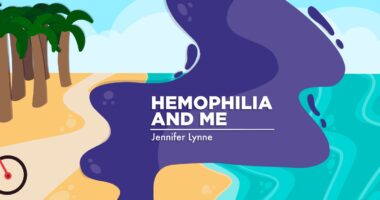How to Recognize the Signs of a Bleeding Disorder
A confusing trip to Goodwill reminds a columnist of getting a diagnosis

Last week, I set out in my car to donate some household items to Goodwill. I’ve been there probably a dozen times, but this time I drove past the Goodwill building twice. Why? Because my community is missing signs. All kinds of signs. Street signs, building signs, and even stop signs were blown away by Hurricane Ian, which hit southwestern Florida on Sept. 28.
Signs are essential because they provide people with information, direction, and warnings. They help guide people to the correct destination, alert them to potential dangers, and provide instructions. Additionally, signs can display business information. In my community, a driver was killed in a traffic accident because of a missing stop sign.
Could you find a building if there wasn’t a sign in front of it? How about a street without a street sign? It’s a lot more challenging than it sounds. Signs are important, I’ve learned.
I started to think about signs of a bleeding disorder, like hemophilia or von Willebrand disease. What happens when the signs are missed? A woman with hemophilia may wander from doctor to doctor for years before receiving an answer. We can’t wear a sign on our body as a building can, so how is a person supposed to navigate the waters of a disorder that’s invisible to the eye?
The signs of a bleeding disorder
According to the U.S. Centers for Disease Control and Prevention, the symptoms or signs of a bleeding disorder in women may include heavy bleeding during menstruation, low iron or anemia, nosebleeds for no apparent reason that last longer than 10 minutes, easy bruising without a physical injury, excessive bleeding after a medical procedure or dental extraction, and a history of bleeds in the muscles or joints without physical injury.
Of course, if you have one or more of the symptoms above as well as a family member with a bleeding disorder, that’s a pretty sure sign you may have one, too.
In my experience, the signs of a bleeding disorder were different when I was a child than they are today. Heavy bleeding when my baby teeth fell out and when I had my tonsils removed were signs when I was young. Heavy menstrual bleeding and anemia plagued my reproductive years. Today I struggle with joint pain, swelling, and abnormal bleeding, like tongue bleeds.
Stay informed and be aware of the signs your body is telling you. Signs are important!
Note: Hemophilia News Today is strictly a news and information website about the disease. It does not provide medical advice, diagnosis, or treatment. This content is not intended to be a substitute for professional medical advice, diagnosis, or treatment. Always seek the advice of your physician or another qualified health provider with any questions you may have regarding a medical condition. Never disregard professional medical advice or delay in seeking it because of something you have read on this website. The opinions expressed in this column are not those of Hemophilia News Today or its parent company, Bionews, and are intended to spark discussion about issues pertaining to hemophilia.








Ellie Coyle
Likewise, when I was young I had constant nosebleeds and bleeding when cutting teeth. I was also one of those children who always had bleeding cuts etc. Menustration was also a nightmare with bleeding that could last for 10 days and also required double pad protection.
My GP put me on the pill at 16 years of age and also suggested having the inside of my nose cauterised! When I had my son at the age of 33, I had so much bleeding that "They thought they had lost me"
When my son bled badly at cutting his teeth I took him to my dentist who, having checked my son's mouth called in another dentist and both agreed that I take him to my GP for blood tests (apparently they did ot like the look of the clotting. Which I did even thought the Gp surgery where they were not happy to do it! The dentist also advised to take my son straight to the hospital if he starts bleeding again. During that evening he was bleeding, I took him to the hospital. Because he was so weak through blood loss, they tested my blood and thee next morning they told me that my son has VWD and I also have it hence an inherited disorder.
Jennifer Lynne
Hi Ellie! Thank you for sharing and for reading my column. Your story is exactly why I will keep writing. I have been told many times “you are very lucky - we thought we lost you” even after knowing there was a problem. VWD and hemophilia are vastly underestimated in women. I am glad you had an answer and hopefully are receiving treatment at an HTC.